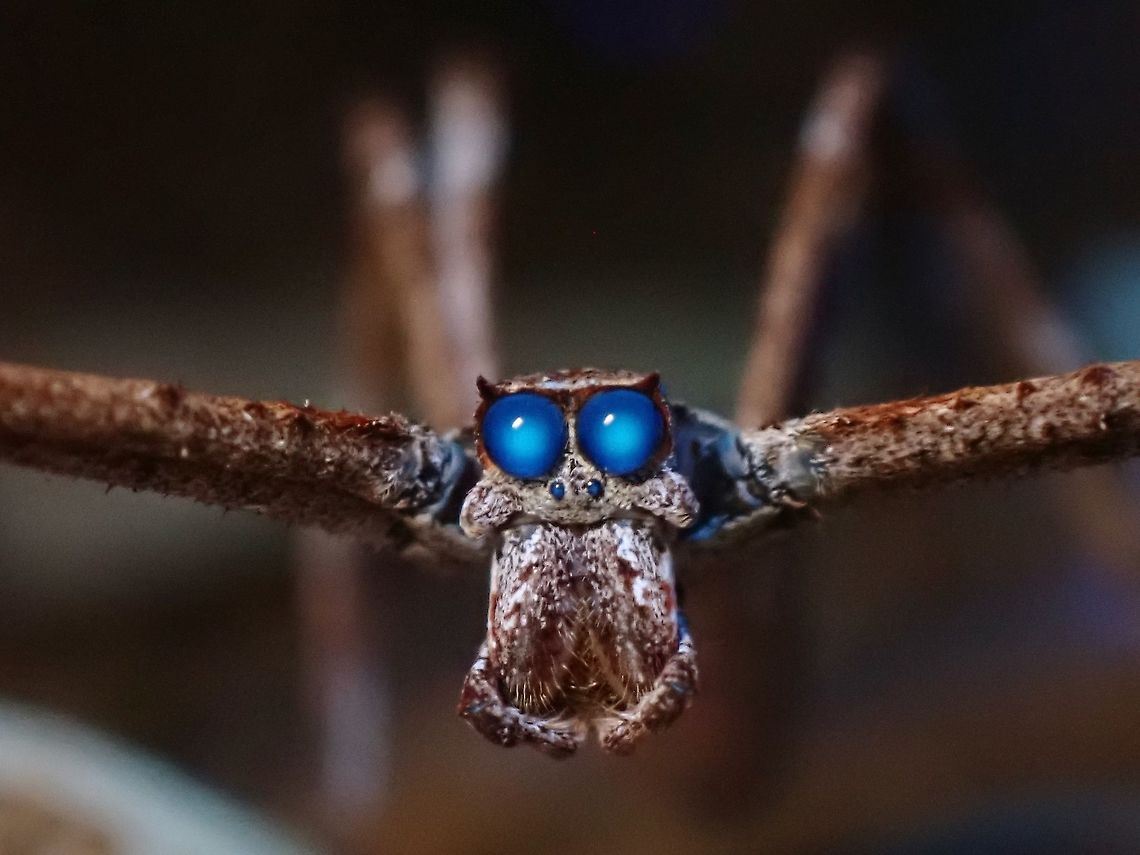 Promoted
Promoted
Blue Eyes!
First encountered this Spider on the Island last November and have seen quite a few of them since then.
When other macro photographers became aware of this find, they were very keen to see it too as they have been searching for this Spider on the island for many years!
This Spider usually comes out of 'hiding' when it starts to get dark to construct it's net-webbings, which it used to cast to catch preys that crawls under it. If it fails to catch prey during the night, it will consumes back the webbings that it has constructed. During day time, it hides among old leafs and twigs where it blends in very well as camouflage.
The eyes of this Spider glows up clearly under UV lighting.
No species identified
The species on this photo is not identified yet. When signed in, you can identify species on photos that you uploaded. If you have earned the social image editing capability, you can also identify species on photos uploaded by others.

comments (11)
Posted 4 years ago
Did you know that many creatures glow under ultraviolet light?! The phenomenon is called biofluorescence, and it occurs when ultraviolet light is absorbed, transformed, and subsequently re-emitted by living organisms. The result is that they glow with gorgeous blue, green, or red fluorescent colors.
The glow emitted from biofluorescent organisms can be detected with a black light, which emits ultraviolet (UV) light thus prompting the visible effects of fluorescence. While UV light is invisible to humans, many other organisms can see it.
An astonishing number of organisms, including arthropods (spiders, insects and relatives), bacteria, fish, reptiles, amphibians, cnidarians (jellyfish, corals, anemones, etc.), mammals, and birds, are able to glow in the dark! Specific examples are puffins, owls, opossums, platypuses, sea turtles, and scorpions!
Why do they glow? Nobody is sure, but hypothesized functions for biofluorescence include communication, camouflage, and sexual selection. Or, perhaps there is no purpose at all. Whatever the reason, one thing is certain—glowing creatures are fascinating oddities! #JungleDragon #Biofluorescence
Click here to see more creatures that glow: 108Ultra Violet Light
https://www.facebook.com/jungledragonwildlife Posted 4 years ago, modified 4 years ago
"each night, a large area of light-sensitive membrane is manufactured within the eyes, and since arachnid eyes do not have irises, it is rapidly destroyed again at dawn"
So was this a night or a day time shot @Albert ? Posted 4 years ago, modified 4 years ago
This pics were taken early night as it is very difficult to find them during day time due to their secretive nature and camouflage. I have seen the same Spider a few days before at night time, and went back with a photographer friend who really wanted to see this Spider. I planned the time to be nightfall just as when they are coming out, so that we can take close-up shots of the face. From my previous observations of them, they will starts to builds their 'net-casting webbing' within the first 30-60 minutes they come out, and it will be impossible to take close-up shots of them after that as will definitely cause the Spider to discard their 'net-casting webbing' if disturbed too much.
Usually the Spider will stay at the same spot for weeks if not disturbed. Posted 3 years ago